
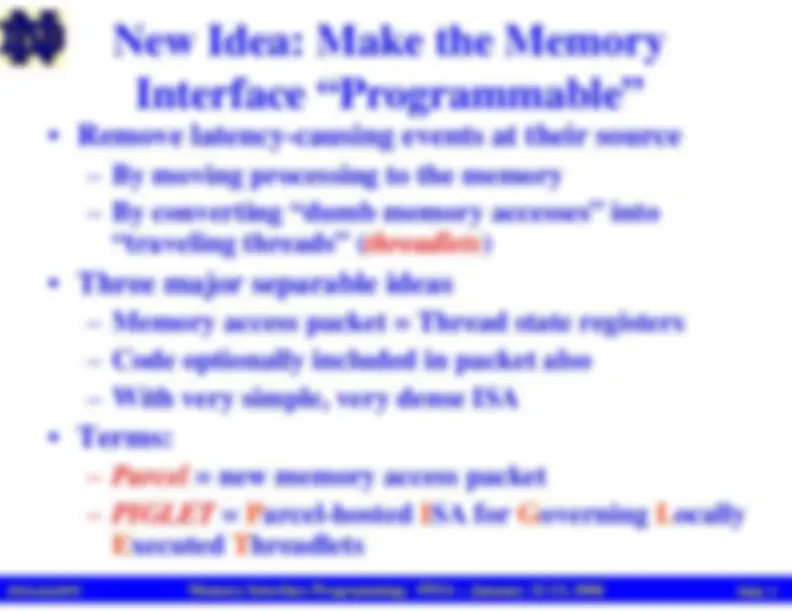
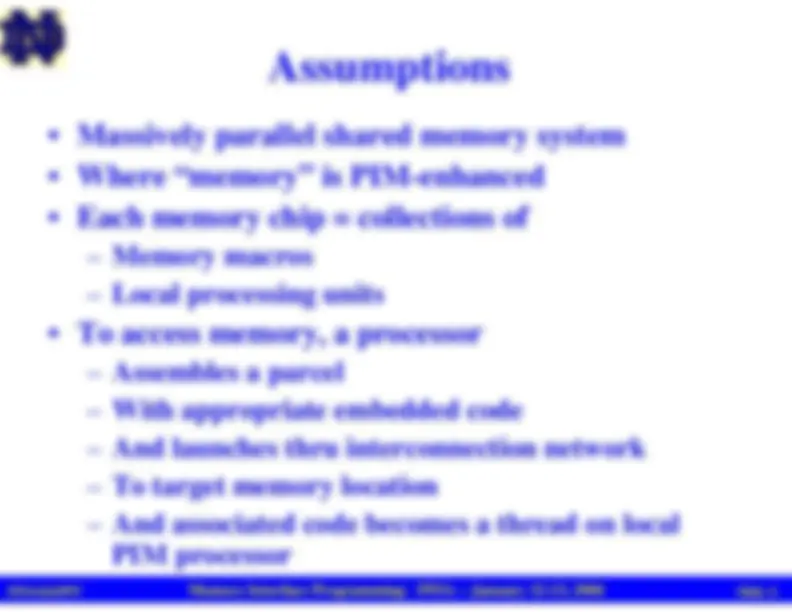
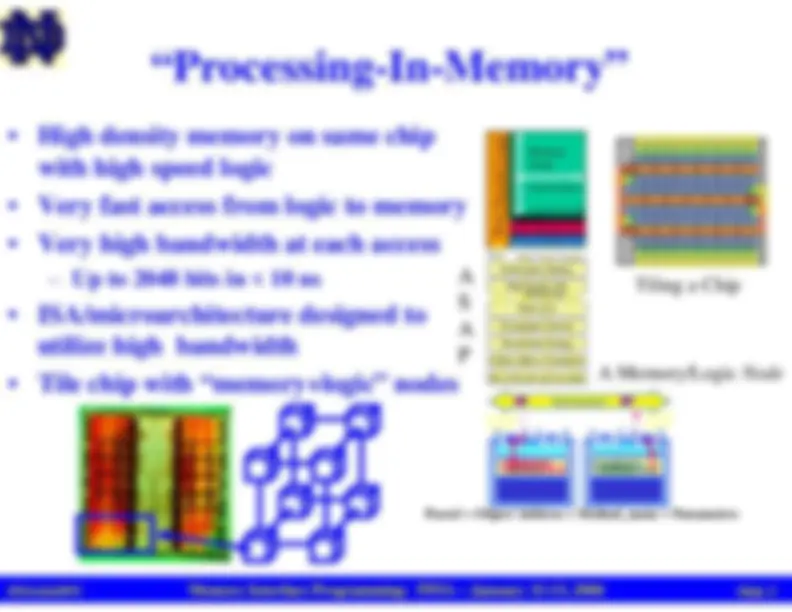
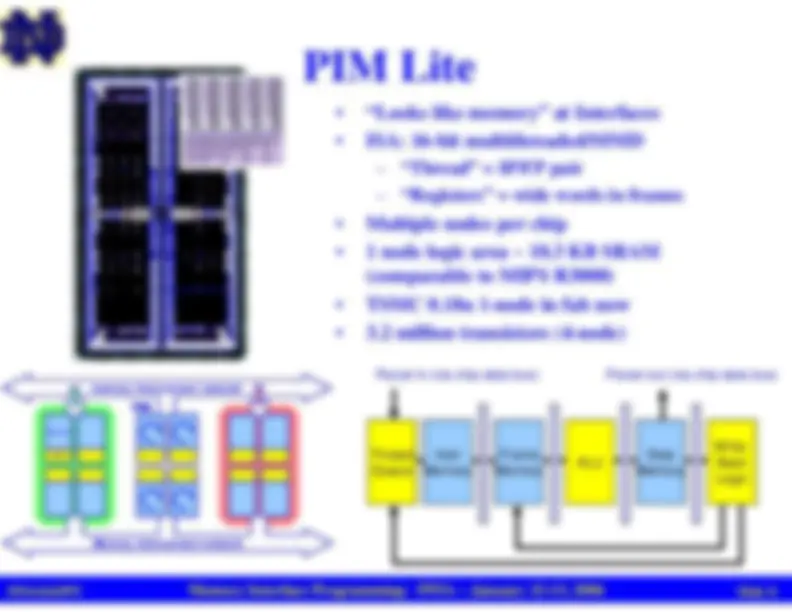

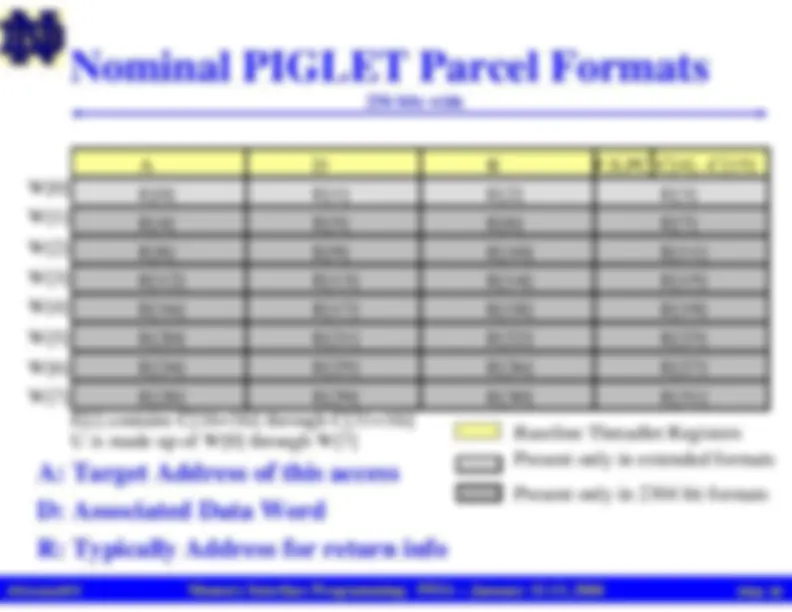
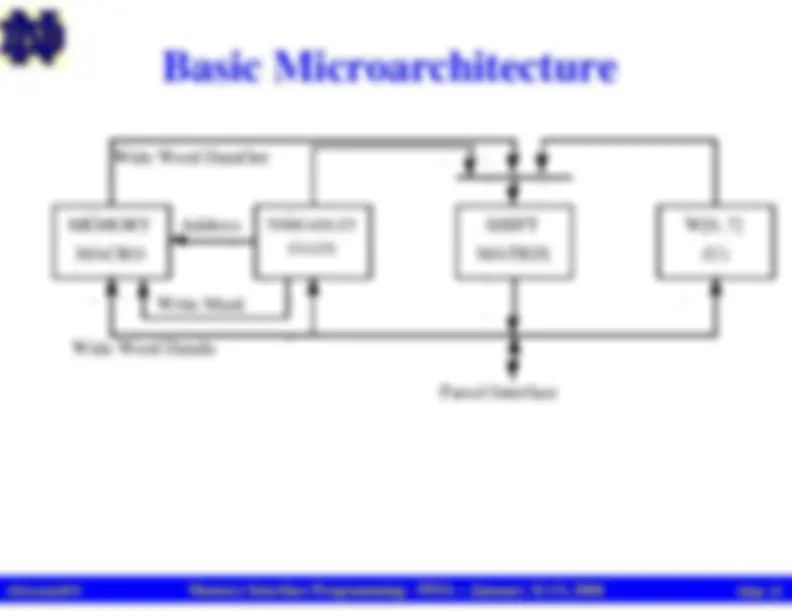
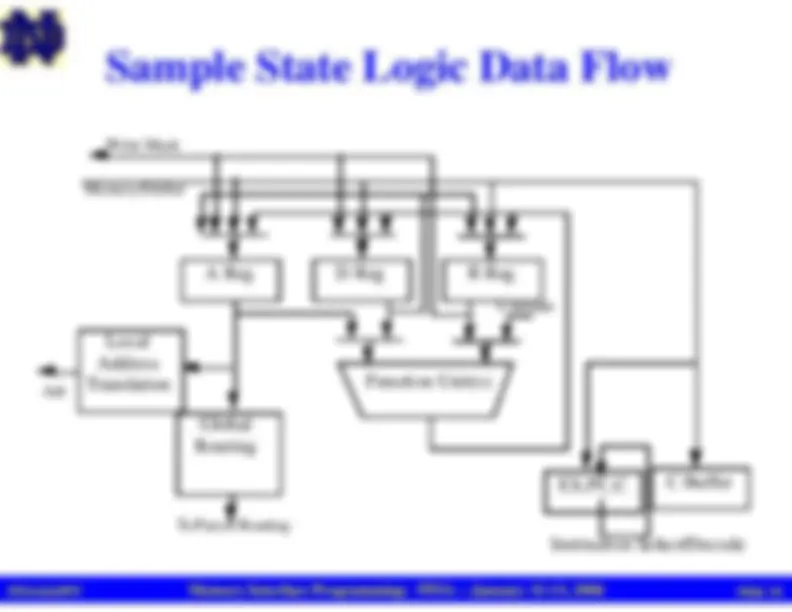
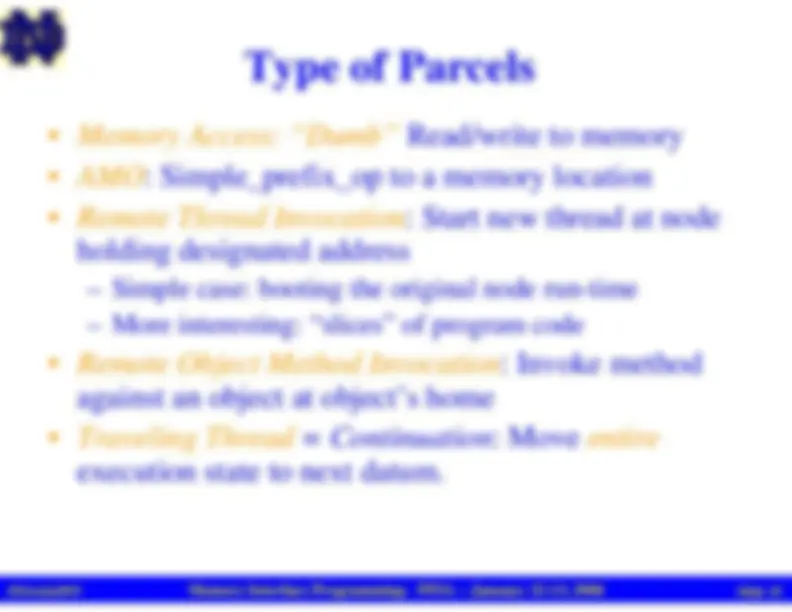

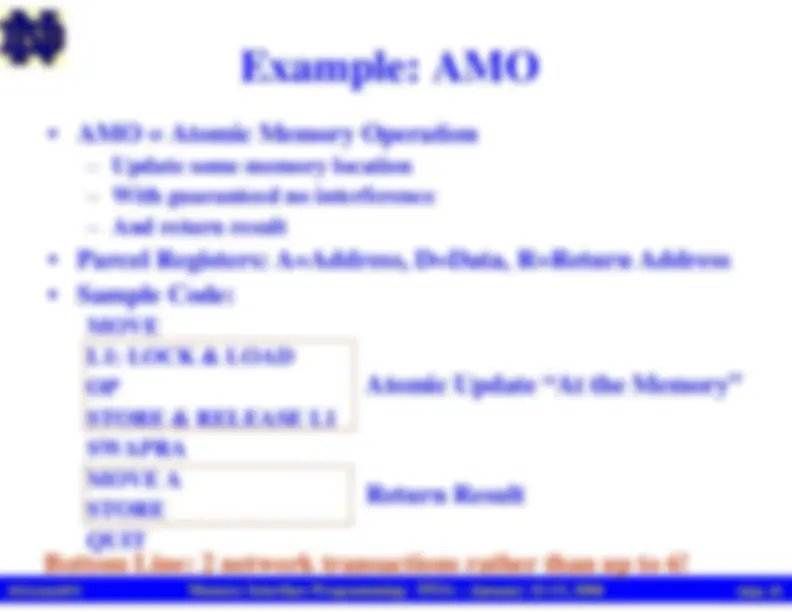
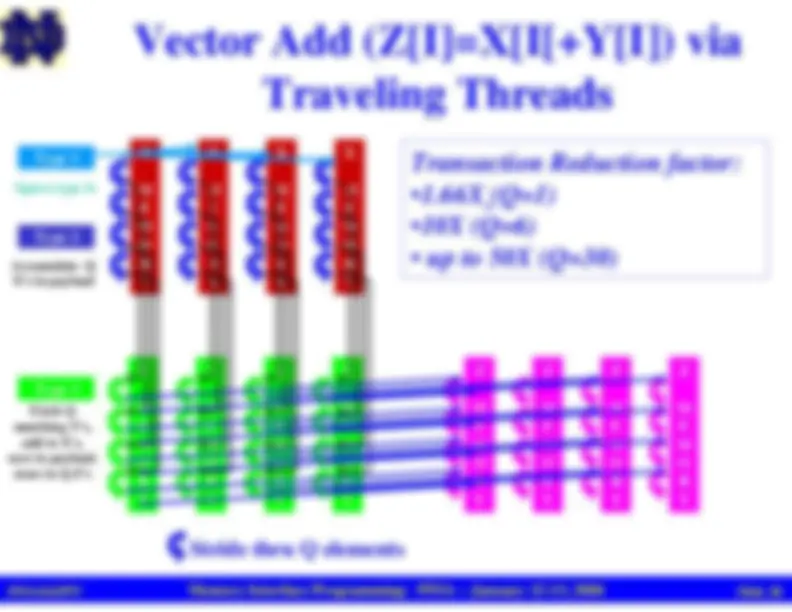
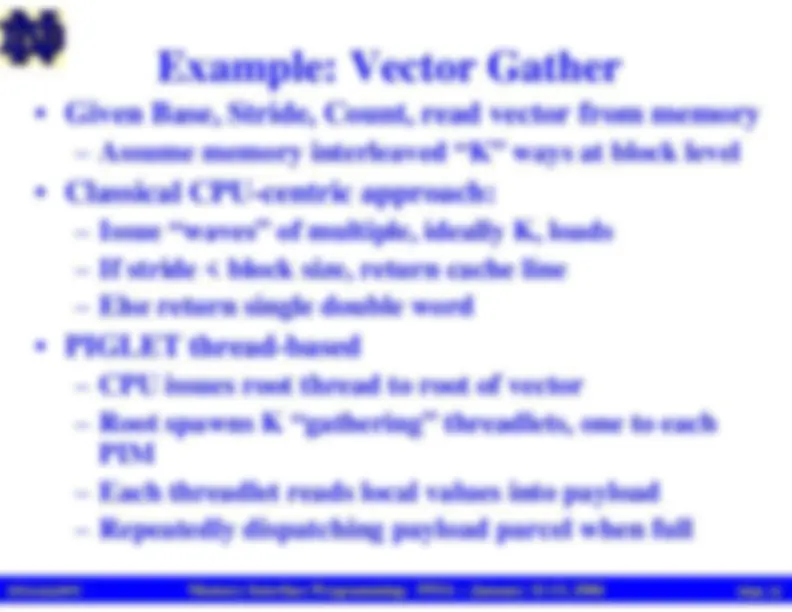
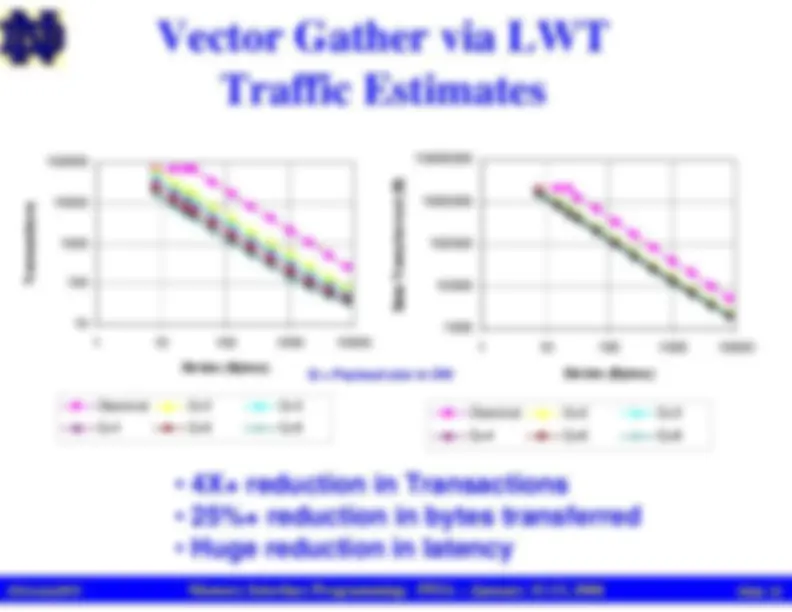
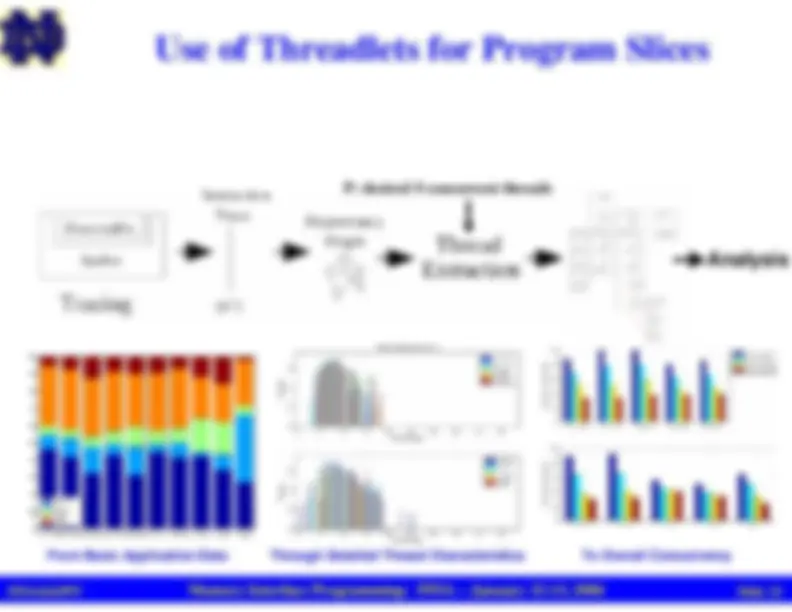
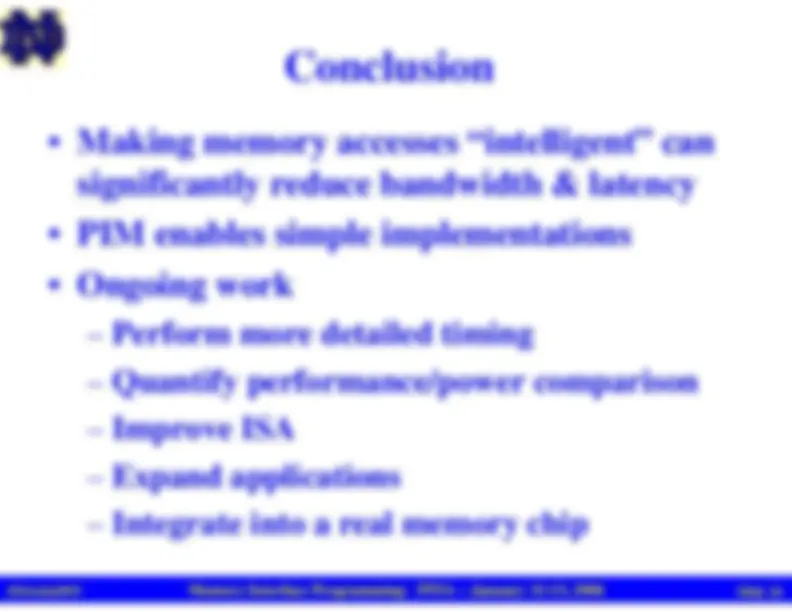



Study with the several resources on Docsity

Earn points by helping other students or get them with a premium plan


Prepare for your exams
Study with the several resources on Docsity

Earn points to download
Earn points by helping other students or get them with a premium plan
Community
Ask the community for help and clear up your study doubts
Discover the best universities in your country according to Docsity users
Free resources
Download our free guides on studying techniques, anxiety management strategies, and thesis advice from Docsity tutors
The concept of making memory interfaces programmable to reduce latency and bandwidth issues in conventional systems, particularly for shared memory systems. The presentation, given by peter m. Kogge at iwia 2004, introduces the idea of threadlets, which are traveling threads that process data in memory, and piglet, a new isa for governing these threadlets. The document also covers assumptions, processing-in-memory, and performance improvements.
Typology: Lab Reports
1 / 25

This page cannot be seen from the preview
Don't miss anything!


















Memory Interface Programming: IWIA – January 12-13, 2004
Memory Interface Programming: IWIA – January 12-13, 2004
Memory Interface Programming: IWIA – January 12-13, 2004
Memory Interface Programming: IWIA – January 12-13, 2004
Slide 5
IWIA04.PPT
Interconnect
incoming
parcels
outgoing
parcels
Parcel = Object Address + Method_name + Parameters
Performance Monitor
Wide Register File
Wide ALUs
Permutation NetworkThread State Package
Global Address Translation Parcel Decode and Assembly
Broadcast Bus
Row Decode Logic
Sense Amplifiers/LatchesColumn Multiplexing
MemoryArray 1 “Full Word”/Row 1 Column/Full Word
Bit
“Wide Word” Interface
Address
A Memory/Logic
Node
Tiling a Chip
Memory Interface Programming: IWIA – January 12-13, 2004
Memory Interface Programming: IWIA – January 12-13, 2004
“Looks like memory” at Interfaces
ISA: 16-bit multithreaded/SIMD
“Thread” = IP/FP pair
“Registers” = wide words in frames
Multiple nodes per chip
1 node logic area ~ 10.3 KB SRAM(comparable to MIPS R3000)
TSMC 0.18u 1-node in fab now
3.2 million transistors (4-node)
Thread Queue
Frame
Memory
Instr
Memory
ALU
Data
Memory
Write-
Back Logic
Parcel in (via chip data bus)
Parcel out (via chip data bus)
memory interconnect network
Memory interconnect network
Memory
CPU
PIM
memory interconnect network
Memory interconnect network
Memory
CPU
PIM
Memory Interface Programming: IWIA – January 12-13, 2004
E[0]
E[1]
E[2]
E[3]
A
D
R
F,S,PC C[4]...C[15]
E[4]
E[5]
E[6]
E[7]
E[8]
E[9]
E[10]
E[11]
E[12]
E[13]
E[14]
E[15]
E[16]
E[17]
E[18]
E[19]
E[20]
E[21]
E[22]
E[23]
E[24]
E[25]
E[26]
E[27]
E[28]
E[29]
E[30]
E[31]
W[0]W[1]W[2]W[3]W[4]W[5]W[6]W[7]
E[i] contains C[16+16i] through C[31+16i]U is made up of W[0] through W[7]
Present only in extended formatsPresent only in 2304 bit formats
Baseline Threadlet Registers
Memory Interface Programming: IWIA – January 12-13, 2004
Memory Interface Programming: IWIA – January 12-13, 2004
MEMORY
MACRO
SHIFT
MATRIX
W[0..7]
(U)
Wide Word DataOut
Wide Word DataIn
Write Mask
Address
Parcel Interface
Memory Interface Programming: IWIA – January 12-13, 2004
A Reg
D Reg
R Reg
Local
Address
Translation
Global
Routing
Function Unit(s)
C Buffer
F,S,PC,C
Instruction Select/Decode
Memory Interface Programming: IWIA – January 12-13, 2004
Memory Interface Programming: IWIA – January 12-13, 2004
Memory Interface Programming: IWIA – January 12-13, 2004
Memory Interface Programming: IWIA – January 12-13, 2004
IWIA04.PPT
Type 1
Type 2 Type 3
Accumulate Q
X’s in payload
Spawn type 2s
Fetch Q
matching Y’s,
add to X’s,
save in payload,
store in Q Z’s